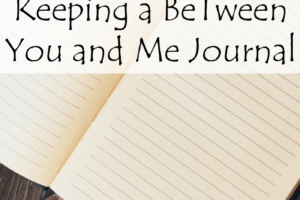How to Start a Simple Bullet Journal
When you can’t find it – create it.
I truly love my bullet journal so much that I turn through the pages far more often than is necessary. It’s better than a purchased planner because it can adapt to your specific needs. However, getting started can feel a little overwhelming.
I have put together some simple steps that will help get you started. Before you begin the process, you need to have the right materials.
Materials for a Bullet Journal
Most of them are lying around your house; you just need to get them together. You will need:
- Journal/Notebook
- Pen or pencil
- Ruler
Optional:
- Washi tape or tabs
- Colored pencils, markers, or colored pens
Journal/Notebook
Any journal or notebook will do – lined, graph, dot, or blank. You are going to be writing and drawing calendars so, for your first bullet journal, I would avoid blank pages. Graph and dot papers are nice because you have a frame of reference for both horizontal and vertical lines but I know people that use lined paper and it works well too.
If you want/need to purchase a journal, I would suggest one that has an elastic pen holder attached to it. That way your pen will be with you at all times. Mine also has a pocket in the back, which I don’t use much but I could see the potential for receipts, coupons, or business cards.
Pen or Pencil
Here’s the thing, journaling should be done with a pen because pencil marks fade. However, a bullet journal requires some drawing (think lines, not a masterpiece) but if you are a perfectionist, you may want to draw the calendars in pencil first so you can erase errors. For all other writing in the bullet journal, use a pen.
Ruler
Rulers are the most useful for drawing the calendars. If you don’t want to put a calendar in your journal, you probably don’t need a ruler at all. Some serious bullet journalists keep a small pocket ruler in their journal. I don’t and only use it when making calendars.
Optional
Washi tape and/or tabs can be used to mark the major sections of your journal; for example, the calendar or business section. When I first started, I used washi across the entire border of each page but it got bulky, didn’t go on straight, and some pages had more than one category on them. Now, I use washi tape as tabs to help me keep track of my different sections.
Colored pencils, markers, or pens can be used to add color and decoration seen in many bullet journals. They can be used to add quotes, pictures, or doodles to your pages. I opted for colored pens. However, the ink is too dark, making it difficult to see the black ink. I use them sparingly to add color when I feel like it. Next time, I will use colored pencils because I want spaces filled with color, not outlined.
Where to Start – Index and Key
First step – the index. The index will be the first few pages of the bullet journal. If you have lined paper, you may only need to add a column to separate page numbers from the description. My journal has graph paper, so I draw out all the lines.
This is important – you will record every page of the journal in the index. Leave several pages blank so you’ll have room to expand the index as you go.
The key is another important organizational tool, although I believe it is optional. The key should be on the inside cover or even the page before the index. It should include any symbols, colors, or marks you use to organize the bullet journal.
A formal bullet journal assigns different symbols for each category that a task on the daily list falls into. For example, a doctor’s appointment would have a star, whereas ‘taking out the trash’ would have an arrow. They are both things you need to do that day but they have a different purpose. For me, that kind of organization takes too long. I have preferred to use to check boxes for everything on my daily list and use the key for broad categories.
Number the Pages
Every page after the index should be numbered. Whenever you start a new page write down the page number and description in the index so that every page is listed. I number my pages as I go rather than doing them all at once.
Categories and Pages
Now it’s time to decide what categories you want to include. The categories will depend on the purpose for your journal. I use mine as an all-inclusive planner for everything in my life – personal, business, and church/spiritual. Others use their bullet journal as a way to record and track goals so they might need different categories than I do. Here are my categories:
I then assign my pages to a category (sometimes more than one) and label it with washi tape.
Here’s a list of my pages:
- Calendar
- Daily list
- Gratitude list
- Weight loss tracker
- Blog stats
- Blog post ideas
- Story ideas
- Gift ideas
- Family clothing needs
- Meal planning
- Words to Use
Other possibilities:
- Daily thoughts
- Places to visit
- Books to read
- Grocery list
- Goals/Goal Tracking
I then fit these pages in the broader categories of – calendar items, daily list, personal development, professional, organization, meal planning.
If you don’t know what you want to include, start with a calendar and daily list pages. These are the two most basic sections you’ll need. You can add other pages as you figure out what you need.
Drawing Calendars
Draw your calendars first. (Be sure to number your pages.) Some people draw one calendar per page, I spread mine out across two pages to give me more room to write.
I didn’t group my calendars together when I first started and that was a mistake. I would suggest drawing out a year’s worth of calendars so that they are all together. It will be easier, trust me.
If you’re thinking that drawing all these calendars sounds like a lot of work, it is. However, if you do it all at once, you won’t have to do it again for a long time. Most of the pages in your bullet journal will not require as much work as the calendars.
I like to leave room for a few notes or reminders on the side.
Daily List
The next section should be the daily list. How many tasks on your list will be entirely based on how much you have do. Dedicate 3 – 6 pages for daily lists at one time. Add other daily list pages wherever you want from there.
Go Get Started
There you have it – a simple, basic bullet journal. Find a notebook, grab a pen, and start organizing. If you have any questions or suggestions please leave me a comment.













20 Comments
Leave your reply.